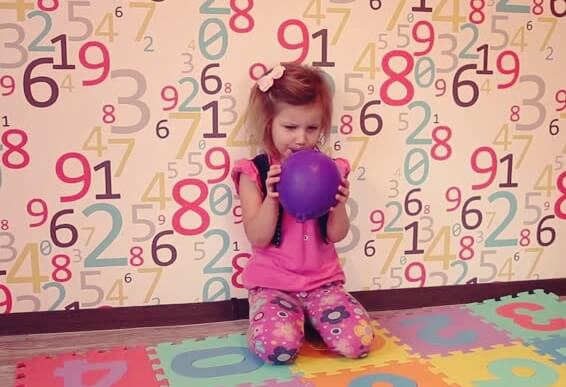Balloon Breathing: Help Your Child Calm Down in a Fun Way


Written and verified by the psychologist Valeria Sabater
Balloon breathing is a great way to help children regulate their emotions. It can help them calm down and, at the same time, develop more awareness of their body. It’s a simple tool they can start to use once they turn 7. By using it, they’ll start to steadily improve their emotional intelligence.
None of us wants to see our children or students overcome by their frustration. No one wants to see them in such a rage that they throw a massive snotty, angry, screaming tantrum. But once they’re two years old, their emotional worlds (still unfamiliar to them) have a tendency to become a problem and a source of family tension.
“The basic premise that children must learn about emotions is that all feelings are okay to have; however, only some reactions are okay.”
-Daniel Goleman-
There’s also something we have to keep in mind here. Our goal as parents or educators shouldn’t be to remove any source of anxiety from the child’s life. That’s not logical. It’s also not a good idea to flatten out their path through the day so that everything is always pleasant and perfectly adjusted to their expectations. The world, as we all know, doesn’t work that way. The key is to give them the tools to self-manage their anxiety, anger, and sadness.
Balloon breathing is an original, fun, and extremely useful strategy for kids. It’s also a perfect fit for the goal we just mentioned. Keep on reading to learn how it works.

Respecting a child’s emotions without empowering their anxiety
Children often use sobbing, screaming, and tantrums as a way of dealing with something they don’t like, or something that makes them anxious. It’s often the only tool they have. Instead of becoming desperate, instead of making the situation worse by yelling, telling them off, or punishing them, you need to put yourself in their shoes. Or to be more specific, you need to put yourself in their head.
The cerebral cortex matures slowly but steadily throughout our lives. What that means is that things like impulse control and emotional control don’t usually finish developing until after adolescence. It’s a long period of time that comes with a lot of conflict between people. Some children have a good handle on managing their emotional states. Then there are children who are much more sensitive, uncomfortable, and loud about their anxiety.
Being aware of these things is very important. Ultimately, the main goal for you as the adult is to be empathetic towards them. Try to understand their frustrations and anger. But, at the same time, remember that validating an emotion isn’t the same thing as agreeing with it. It just means recognizing that it exists and having tools to hand to the child so they can learn to understand it, deal with it, and process it. That’s why balloon breathing is such a good place to start. It’s a wonderful technique to show them once they turn 7.
What exactly does balloon breathing do for children, and how exactly do they do it?
Balloon breathing is a practice you can teach children to help them calm down and control their impulses. They should do it any time they feel nervous or angry. In those moments, it’ll help them control themselves, stay calm, stimulate their psychomotor skills, and help them develop an awareness of their body, things like posture and laterality.

What do you need?
If you want to help them do balloon breathing, here’s what you need in terms of conditions and material:
- A balloon for the child. If you’re doing this in a classroom, try to make sure it’s a comfortable, spacious environment without too many stimuli.
- You should have mats or pillows in your classroom so that the children can lay down at some point.
- Remember that giving a balloon to a child under 7 years old can be extremely dangerous.
What do you do?
To practice this technique, you have to follow these steps:
- Don’t give the children a balloon until you’ve explained how this activity (or this game) works.
- In simple terms, explain to them how our body reacts in a special way when we let tension and emotions like anger, rage, or frustration take over us.
- Once you’ve explained this, then you can give them a balloon. Afterward, ask them to start blowing it up. As they do that, you’ll tell them about how our mind and body are like that balloon. The angrier we are, the more air and negative emotions there will be inside. It will keep on expanding until, at some point, it pops (let this happen).
- Then you can give them another balloon. But this time tell them to only blow it up a little bit and then let some air out. The balloon will go back to its original state without popping. Now it’s calm and relaxed.
- Lastly, ask the children to lay down on the floor (on the mats or pillows).
- Now have them imagine they’re a balloon. An angry, angry balloon that’s filling up with a lot of air. Their belly fills up, their arms, their legs… They’re about to pop because all their negative emotions have taken over.
- What now? Deflate them and let them take notice of all the relief they feel in their body. Now they feel lighter, more comfortable, and happier.

Lastly, remind the children that any time they feel full of anger, any time life gets complicated and brings along things that are unpleasant, won’t wait for them, or make them uncomfortable, they should think about the balloon. They should never let it pop because, when that happens, we all lose, and we all get scared.
When you feel nervous, there’s nothing better than breathing deeply and letting the air out of your lungs. Deflating all that tension will help you feel lighter and more in control of yourself.
This text is provided for informational purposes only and does not replace consultation with a professional. If in doubt, consult your specialist.








